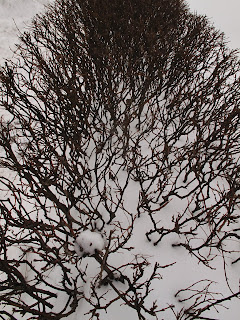A polar vortex (also known as a polar cyclone, polar low, or a circumpolar whirl) is a persistent, large-scale cyclone located near either of a planet's geographical poles. On Earth, the polar vortices are located in the middle and upper troposphere and the stratosphere. They surround the polar highs and lie in the wake of the polar front. These cold-core low-pressure areas strengthen in the winter and weaken in the summer due to their reliance upon the temperature differential between the equator and the poles. They usually span less than 1,000 kilometers (620 miles) in which the air is circulating in a counter-clockwise fashion (in the Northern Hemisphere). As with other cyclones, their rotation is caused by the Coriolis effect.
The Arctic vortex in the Northern Hemisphere has two centers, one near Baffin Island and the other over northeast Siberia. In the southern hemisphere, it tends to be located near the edge of the Ross ice shelf near 160 west longitude. When the polar vortex is strong, the Westerlies increase in strength. When the polar cyclone is weak, the general flow pattern across mid-latitudes buckles and significant cold outbreaks occur. Ozone depletion occurs within the polar vortex, particularly over the Southern Hemisphere, which reaches a maximum in the spring.





























































































No comments:
Post a Comment